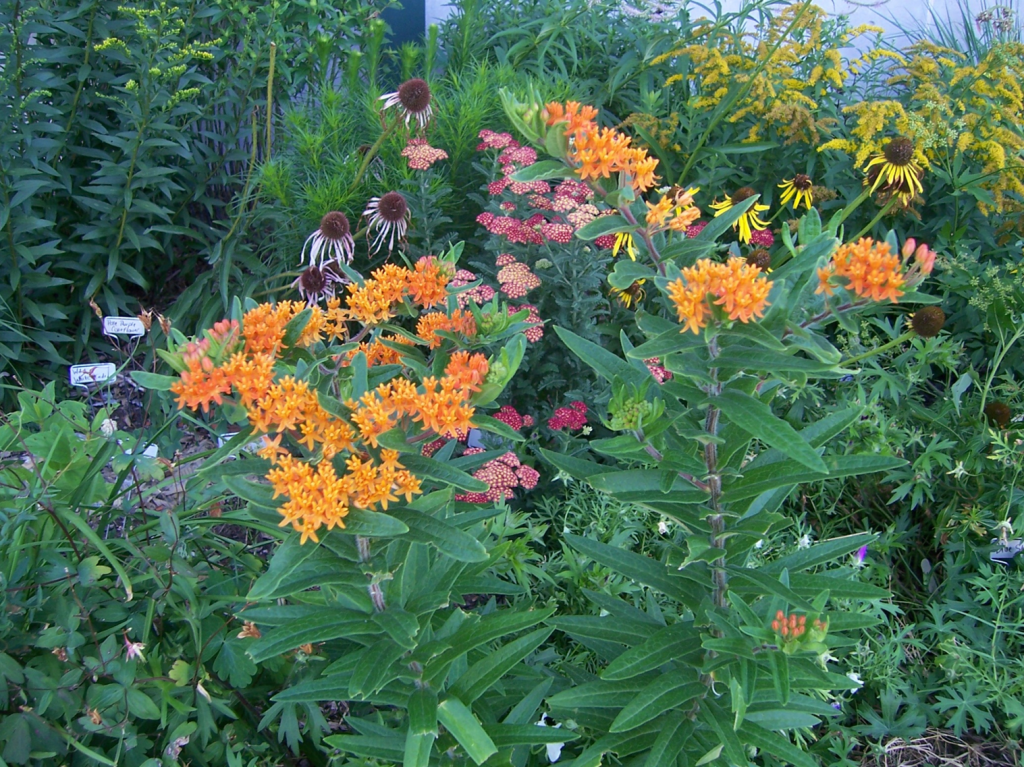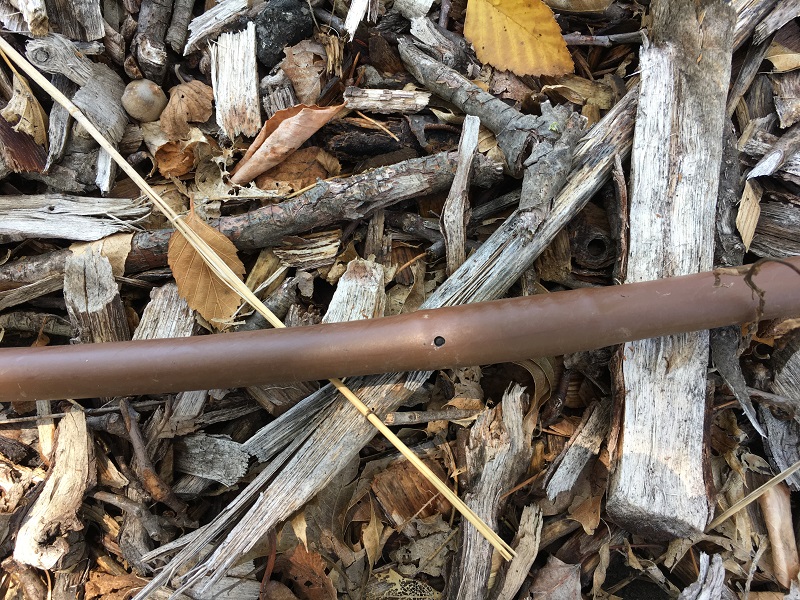Last week the Arboretum staff visited a flower farm near Lawrence. It was interesting to see how they were growing their flowers to be used in arrangements and displays for special occasions. They focused on native plants, but also had some annuals, bulbs and shrubs, too. During our tour, the topic of irrigation and water use were explored, because they are under severe drought conditions. It made me think about our irrigation practices and ways to create a water-wise landscape. Here are five water saving practices for you to implement in your garden.
Choose plants adapted to your site
One of the biggest mistakes I have made when establishing a new garden is choosing plants that I like rather than plants that like the area in which I am trying to establish them. There is a big difference. It is critical to match plants to the site. The closer they are adapted to your landscape the less water they will need to survive. Native plants are always a good choice, because they are already adapted to our climate. Evaluate your landscape’s soil, sun exposure, and moisture content. By understanding these aspects of your landscape, you will be able to make informed plant choices. There is a palette of plants that will almost effortlessly grow in your garden. Grouping plants with similar water needs that match your landscape conditions will ensure success.
Space Plantings Tightly
In their book Planting in a Post-Wild World: Designing Plant Communities for Resilient Landscapes, Thomas Rainer and Claudia West develop the ideas of layering plants. There are usually at least three distinct layers of plants: the upper layer filled with taller structural plants used to frame and punctuate the landscape, the middle layer filled with ornamental flowering plants and the ground level that weaves the other layers together and shades the soil which controls weeds. These layers mimic natural plant communities and each layer is important for the health of the plants. A collection of plants living in community can be extremely drought tolerant and water-thrifty.
Use mulch around trees and shrubs
Mulches can be a blessing and a curse depending your mulching practices. We typically apply a two to three inch layer of mulch around a tree by simply mulching a tree a few inches away from the root flare and extending out to its drip line. Shrubs get the same treatment. It is vital to keep mulch several inches away from the trunk or stem. Please, no mulch volcanoes! Mulches prevent weeds, eliminate erosion, retain soil moisture, help moderate soil temperatures, provide a buffer between equipment and the trunks and stems and increase the aesthetics of the overall landscape. Too much mulch (over four inches) starves roots of oxygen by sealing off the ground suffocating the plants. Old mulch can matte up and restrict water infiltration, too.
Irrigate efficiently
During times of prolonged drought, irrigation may be necessary. Plants naturally go dormant, but in a display bed you can add supplemental water to keep them more vibrant and healthy. We use pressure compensating drip irrigation tubing with emitters spaced 12 inch apart. Drip irrigation puts water where it is needed for optimum efficiency in the root zone rather than on the leaves. If you irrigate with overhead sprinklers, start sprinklers early in the morning or later in the evening. Avoid watering during the hottest part of the day to reduce evaporation and loss from wind. You can also recycle rainfall and create a rain garden.
Reduce your lawn
Cool season grass lawns with roots that are maybe six to twelve inches deep are one of the most watered landscape plants. If you think strategically and replace part of a water-guzzling lawn with deep rooted wildflowers, grasses, shrubs and trees or even with native buffalograss, you will save water and increase wildlife diversity in your landscape. You may like open spaces with lawn for play or leisure, but you can scale back the size of your lawn and still have the aesthetics you appreciate. Mow your lawn at the highest height and water only as needed. Turfgrass has its place in the landscape, but maybe not the most prominent place it currently does.
We don’t think often enough about the water we use. It is a precious commodity. Remember the 2011 and 2012 drought in Kansas? We were using tremendous quantities of water to keep our landscapes alive. It made us evaluate each plant according to its response to these extreme conditions. Obviously, some plants did better than others and we lost some plants those years. It made us think critically about our plant choices and irrigation practices. A beautiful and resilient landscape that uses little if any supplemental water is an achievable result. A few changes can make a big difference.




